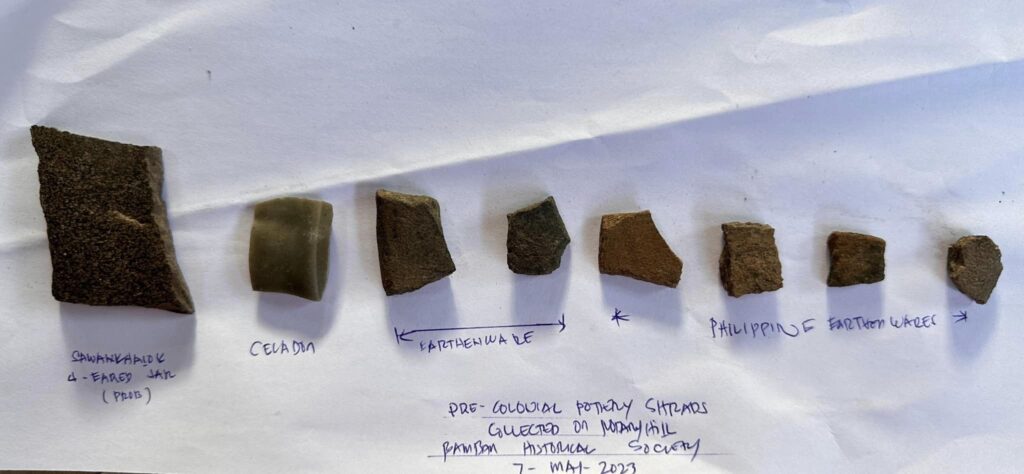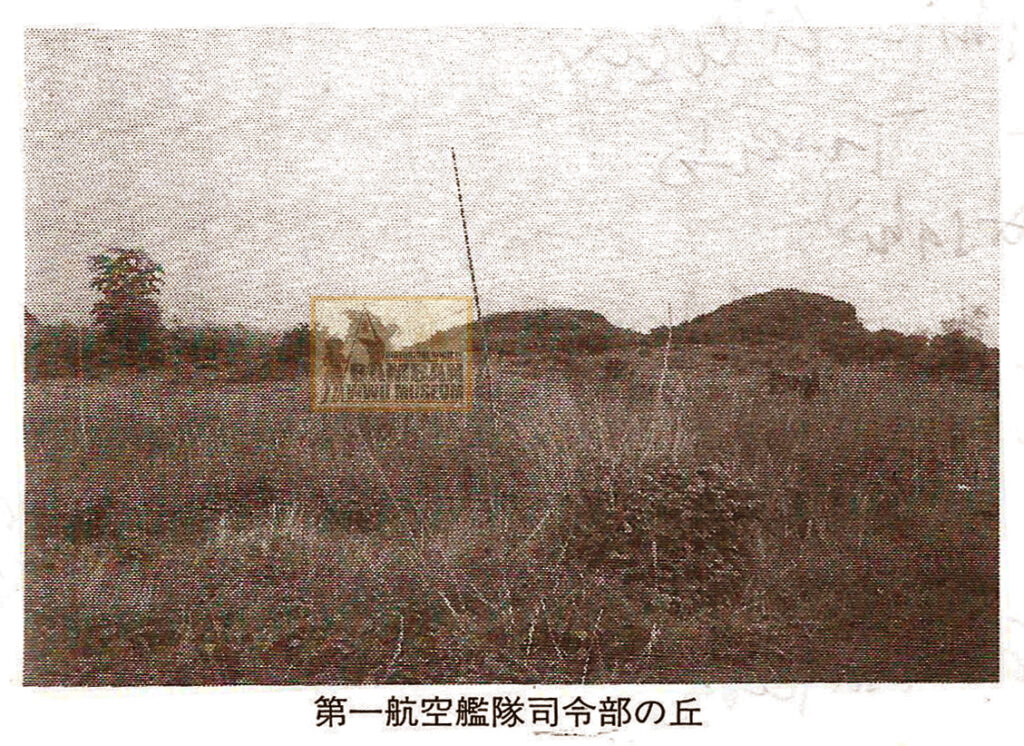
the Japanese naval headquarters in Bamban in WWII.
Photo courtey of Moji Chikanori, Bamban WWII Museum collection.
Investigating History:
THE JAPANESE SECRET BASE IN BAMBAN, NOW A TOURISM DESTINATION – バンバンの日本海軍本部
Unknown to many historians, especially in WWII in the Philippines, there was a time when the Imperial Japanese Navy’s 1st Combined Air Fleet, composed of the primary naval air force command in the Philippines during the Battle of Leyte in the last quarter of 1944, was established about 100 kilometers north of Manila but near Clark Field (north).
SHO ICHI GO – VICTORY (LEYTE) OPERATION OCTOBER 1944 – 昭一号作戦:1944年10月の勝利作戦(レイテ)
It was November 19, 1944, as the American carrier-borne aircraft from the Task Force 38 where conducting almost daily air raids and fighter sweeps all over Japanese facilities, airfields and assets in Manila and Luzon area. The Japanese had already initiated the Kamikaze Special Attack Force, an unorthodox strategy in making an impact on the war with the American Leyte Landing.
The 1st Air Fleet, which was already in the Philippines in early October 1944, oversaw the Imperial Japanese Navy’s air defense. When the Japanese Sho Ichi Go (Operation Victory), the navy’s strategy to defend the Philippines in the event of American attack, was initiated on the event of the American landing in Leyte (around October 20, 1944), the 1st Air Fleet lacked the number of airplanes to fulfill its duty.
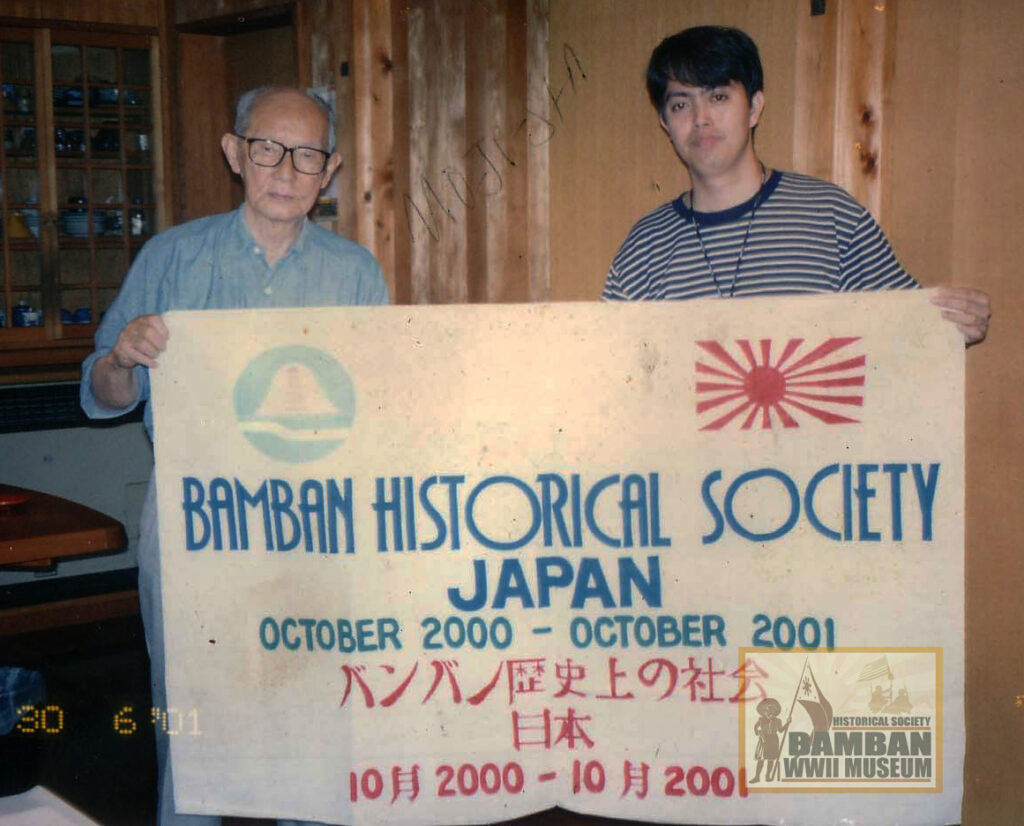
his home in Oiso, Japan in 2001.
THE 2nd AIR FLEET – 第2航空艦隊
Therefore, the 2nd Air Fleet was mobilized from Taiwan to the Philippines and deployed its tactical air units to Clark Air Center on October 22-23, 1944, while the headquarters of both the 1st Air Fleet and 2nd Air Fleet were established near the Nichols Field. Vice-Admiral Onishi Takijiro organized the First Kamikaze Special Attack Corps in Mabalacat on the evening of October 19, 1944, in support of the Imperial Japanese Navy’s Leyte Operations.
IN the beginning, Vice-Admiral Onishi tried to convince Vice-Admiral Fukutome, on the organization of the Kamikaze Special Attack within the 2nd Air Fleet but was not accepted. Immediately upon deployment with most of the 2nd Air Fleet air groups around Clark Air Center (Bamban, Mabalacat, Clark Proper, Angeles and Porac airfields), it was decided to conduct air operations against Americans in Leyte Gulf, but with minimal impact.
ENTER KAMIKAZE – 神風特別攻撃隊
On October 25, 1944, in the early morning (7.25 a.m.) sortie at the Mabalacat East Airfield, Lt. Yukio Seki, in command of the Shikishima Unit of the 1st Kamikaze Special Attack Corps, launched a suicide attack on American surface vessels in Leyte Gulf, hitting and sinking the U.S.S. St. Lo escort carrier and damaging others. It was the first successful suicide attack of the Kamikaze that proven Vice-Admiral Onishi’s rationale in organizing the corps in Mabalacat.
The following day, Vice-Admiral Fukutome concluded with Vice-Admiral Onishi’s Special Attack tactics, the two commands became the 1st Combined Air Fleet, with Vice-Admiral Fukutome as the Commander in Chief while Vice-Admiral Onishi as the Chief of Staff.
THE TRANSFER OF THE COMBINED AIR FLEET – 連合航空艦隊の動き
However, the incessant conduct of air operations around Manila by the U.S. Navy’s carrier-borne aircraft made the decision to move the headquarters out of Nichols but into Clark area. The site was chosen was not actually at Clark proper, but to the north, in a former local settlement of few nipa huts on the slope of the two small hills on what is now as Rolling Hills, San Nicolas, Bamban, Tarlac.
On November 19, 1945, begun the movement of the 1st Combined Air Fleet to the new headquarters in Bamban which took the staff and personnel about 3 days to complete the transfer. Vice-Admiral Fukutome was with the headquarters while Vice-Admiral Onishi took off at nearby Clark Field for Japan, to request more aircraft for the Philippine garrison.
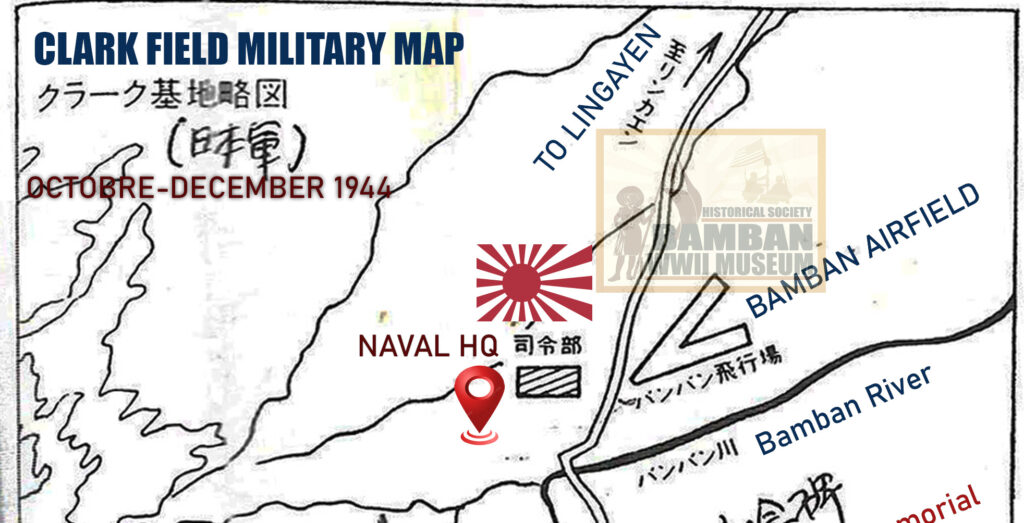
of the secret Japanese Navy Headquarters of the Combined Air Fleet in
Bamban.
MEETING MOJI CHIKANORI – 門司親則との出会い
During my stay in Japan in 2000-2001, I was fortunate to have met Moji Chikanori, who was a staff of the 1st Air Fleet and the adjutant to Vice-Admiral Onishi in the Philippines in 1944. Moji-San revealed to me in person of his war experience and the fate of the Japanese navy air force in the Philippines as he journeyed into the battlefields and headquarters of the 1st Combined Air Fleet.
The Japanese Naval Headquarters in Bamban was in a secluded slope of the Rolling Hills, facing west side of the hills. A tunnel was constructed to serve as the command center and the other as the Tsushintai communication tunnel.
THE SECRET JAPANESE NAVY HEADQUARTERS – 秘密の日本海軍航空基地司令部
No Filipino guerrilla unit operating in Bamban and Clark area came to know the existence of this Japanese Naval Headquarters, in command of all Japanese navy’s tactical and Kamikaze units in the Philippines. No bomb fell in the place either, as other Japanese targets were bombed by the marauding American naval fighters, bombers, and torpedo bombers.
THE TWO ADMIRALS IN BAMBAN – バンバンの二人の空軍大将
Vice-Admiral Onishi, after completing his mission in Japan, with the transfer of some close to 200 aircraft to the Philippines to replenish the depleting air capacity airplanes of the Combined Fleet, quickly moved into the new Naval Headquarters in Bamban mid- December 1944.
Both Vice-Admirals Fukutome and Onishi were at the Bamban Naval Headquarters, but mostly inside the tunnel command center, until the two commands were ordered to escape; Fukutome to Saigon and Onishi to Taiwan, on January 6 and 10, 1944. My friend Moji San was with the group of Vice-Admiral Onishi and transferred to Taiwan with the 1st Air Fleet, until the end of the war.
MEETING ONISHI’s ADJUTANT, OISO, JAPAN CIRCA 2000-2001 – 2000年から2001年にかけて日本にて大西副官と会談
The facts about the Bamban Naval Headquarters of the 1st Combined Air Fleet was in historical oblivion, until I met Moji San in his home in Oiso, Japan, while working at the Shin-Ei Sangyong in Yokohama. There, in his quiet home, he told me of his journey and life in the Bamban. While in Japan, it happened that Dr. Rico Jose (authority in WWII History in the Philippines) was in Japan too, so I invited him and we both visited Moji San, where the two engaged in historical discussions about the Special Attack, and the Bamban Naval Headquarters. I made my last visit to Moji San on October 4, 2001 and soon after that, went back home, and never to see Moji San again. He died on August 16, 2008. He was 91 years old.
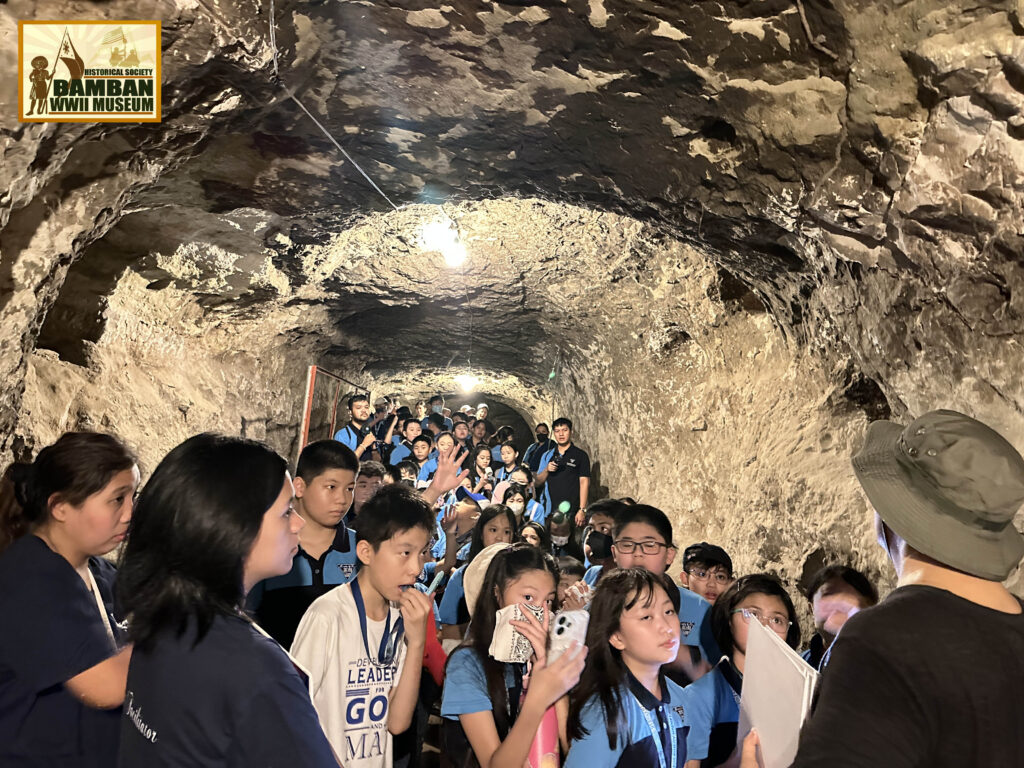
Bamban, with numbers of students during a Lakbay-Aral WWII Battlefield Tours.
PRESERVING A WWII HISTORICAL SITE – 大東亜戦争史跡の保存
Today, the exact place where the Japanese Combined Air Fleet headquarters used to be established, is preserved. On the slope of the two small hills, there is now a Peace Shrine and a Torii gate. On the left side with the East Hill, is the former command center tunnel of the headquarters, while on the right side with the West Hill, the communication tunnel was located. Since coming from Japan in October 18, 2001, I took the opportunity to contribute in the preservation of these sites, as part of WWII History in our country.
The former Japanese naval headquarters in Bamban is now an identified WWII historical site and tourism destination with both locals and tourists alike.
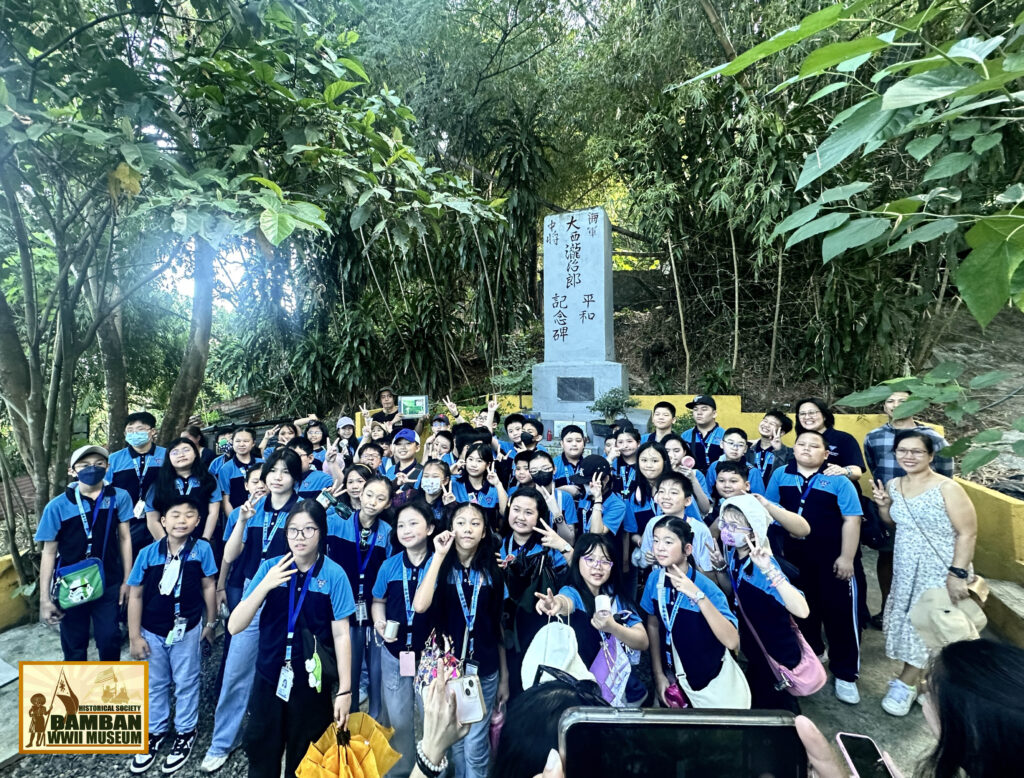
during WWII Battlefield survey.
Citation:
(1) Moji Chikanori, For the Spirits of the Dead Soldiers – A Visit to Philippine Islands.
(2) Moji Chikanori, At the Far End Between the Sky and the Sea – Reminiscences of the First Air Fleet Adjutant.
(3) Inoguchi, Nakajima and Pineau, The Divine Wind – Japan’s Kamikaze Force in WWII.
Rhonie Dela Cruz
Bamban Historical Society
Bamban WWII Museum
Center for Pacific War Studies
Provincial Government of Tarlac –
Tarlac Provincial Tourism Office

